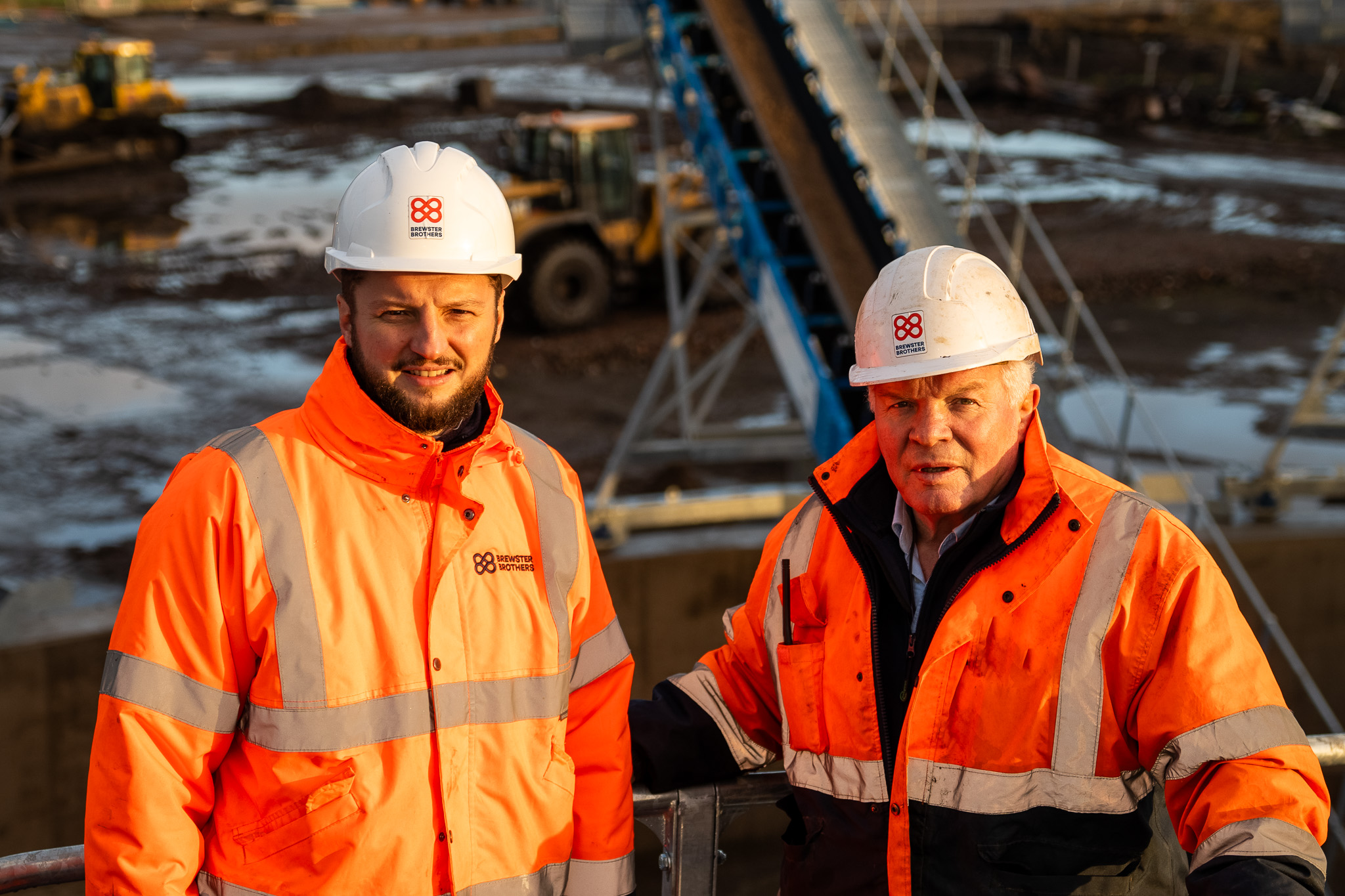Scott Brewster: Scotland’s missing ‘low hanging fruit’ in its net zero journey

Scott Brewster (left) with his father Alex
Scott Brewster, managing director of Brewster Brothers, explains how important it is to include the carbon footprint of the materials we use in the construction of our built environment, as well as the carbon footprint of its operational life.
Almost 20 years after the first Scottish Government report on ways to measure and mitigate greenhouse gases emitted in the construction of the nation’s buildings and infrastructure, there’s still no mandatory requirement in place, says Brewster Brothers, experts in sustainable resource management.
Over the last year, the Scottish Government has been consulting on its Heat in Buildings strategy, which aims to insulate the country’s buildings better, and to accelerate the move to cleaner forms of heating. When these measures are introduced, they’ll help the country’s buildings reduce what’s called their “operational” carbon, which is emissions created during a building’s operational lifespan.
However, a report from Zero Waste Scotland in October 2023 suggests that up to 70% of a building’s lifetime carbon emissions come from “embodied” carbon. The organisation defines embodied carbon as “The portion of Greenhouse Gas (GHG) emissions that are released during extraction, manufacture and production, transportation, construction, repair and maintenance, refurbishment and end-of-life management of materials.”
In that same report from last year, Zero Waste Scotland goes on to say “While Scotland is on a path to reduce the operational carbon of our built environment through the de-carbonisation of the energy grid, the Building Regulations and the ‘Heat in Buildings’ strategy, embodied carbon is currently unregulated.“
Meanwhile, a report from the Royal Scottish Geographical Society from March this year points out that many people in and around the sector want that to change.
“One of the primary regulatory changes being advocated for is the mandatory use of low or zero carbon materials in construction projects. Experts argue that this requirement should be embedded in the planning approval process, rather than being mere guidance. By setting targets for the use of low carbon materials, such as a requirement for all materials to have the lowest carbon content by 2045, the market can be incentivised to shift towards more sustainable practices. Additionally, the introduction of Environmental Product Declarations (EPDs) can provide standardised information on the environmental impact of building materials.”
If the construction industry reduced its carbon emissions it would be transformational for Scotland’s net zero targets and circular economy ambitions. The sector generates 50% of Scotland’s waste, 40% of Scotland’s carbon emissions and is responsible for 50% of Scotland’s natural resource consumption.
Over the summer the Scottish Government published its report into ways to measure and regulate “whole life” carbon, which essentially adds operational carbon emissions to embodied carbon emissions. The report found that there are a number of organisations in Scotland who have already introduced their own standards, saying “Despite there being an evolving landscape in terms of assessing Whole Life Carbon emissions (e.g. the increasing provision of Environmental Product Declarations), appropriate and best practice tools for measuring whole life carbon emissions already exist and are already being used.”
It adds “the Scottish Government is well placed to level the playing field by providing clear guidance and signalling which approaches are considered best practice. International case studies show that providing appropriate guidance ensures consistency and is a key first step to the sector driving down emissions in line with Scotland’s net zero goals.”
The Scottish Government has been looking at embodied carbon for a long time, however. The Sullivan Report (A low carbon strategy for Scotland) first raised this issue back in 2007.
Current guidance in Scotland talks of recycling excavation waste and using recycled aggregates ‘where possible’, which means that it’s completely optional. We hope the Scottish Government’s report from July this year will finally nudge it to formalise regulations which will mean embodied carbon emissions, as well as operational emissions, are always measured and minimised during the planning process.
Given that parts of the development and construction industry have already created standards (such as the Environmental Product Declarations that Brewster Brothers’ recycled sands and aggregates have), it should be a relatively simple job to pick this low hanging fruit and translate those standards into enforceable regulations across the construction and demolition sector.




















